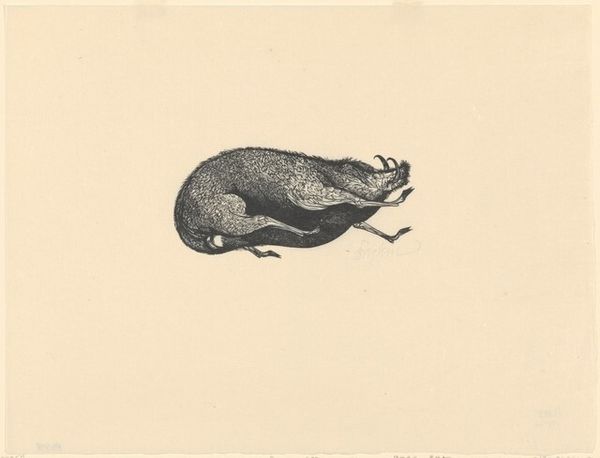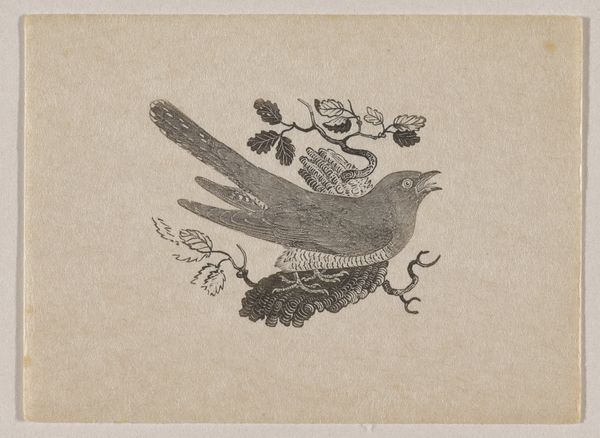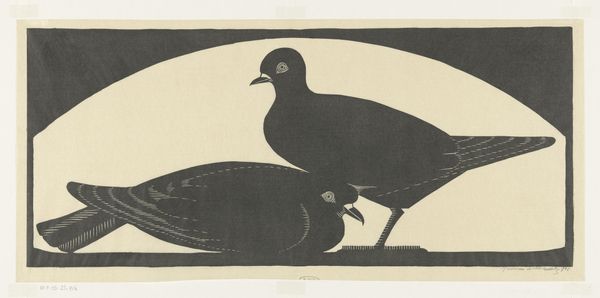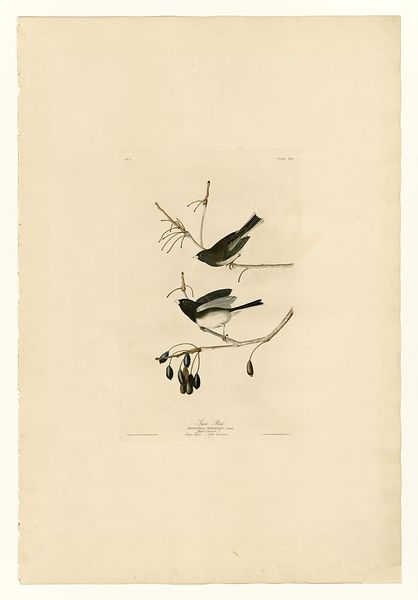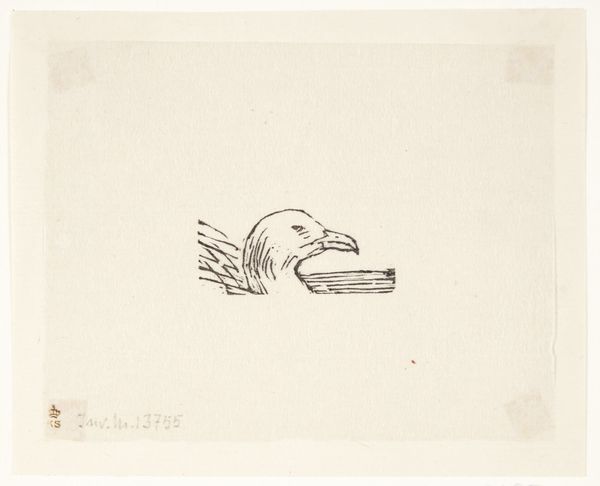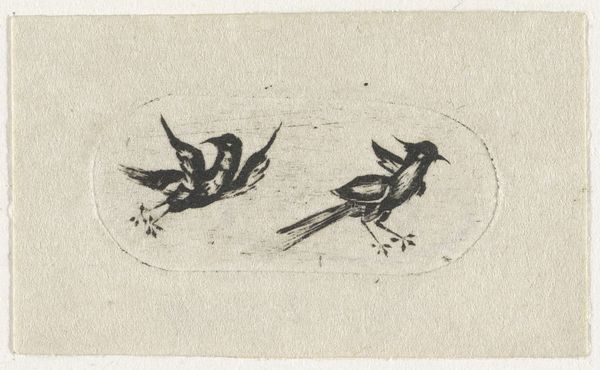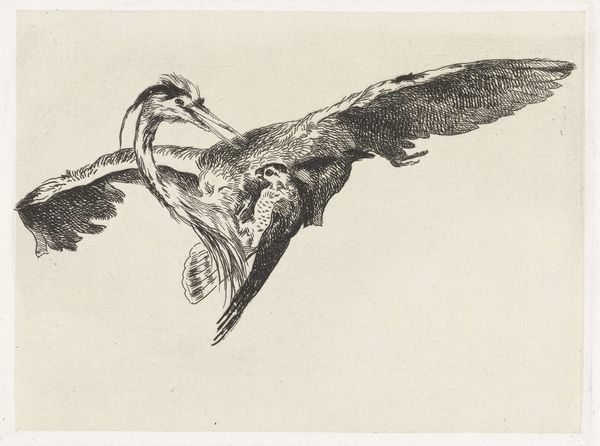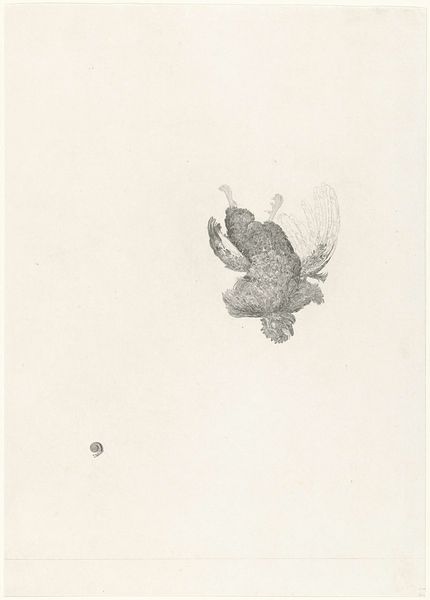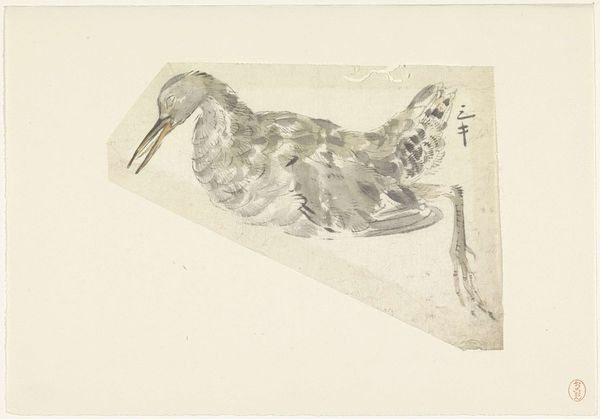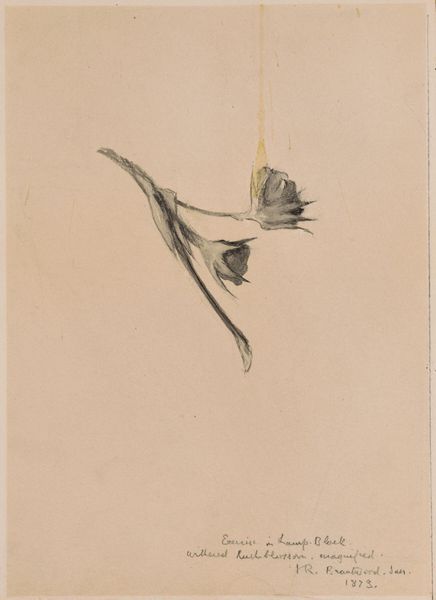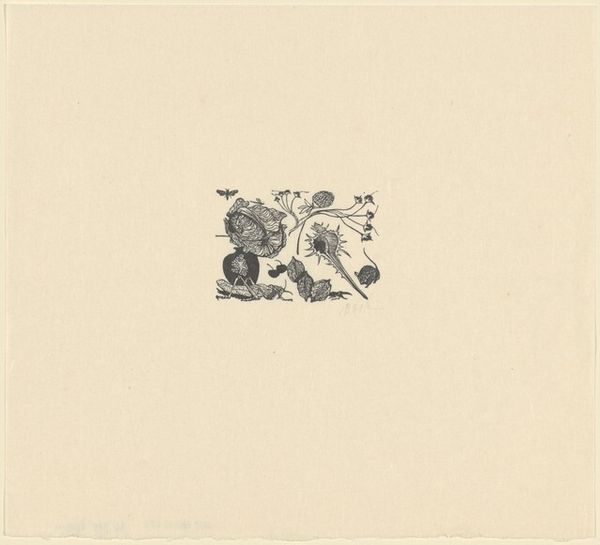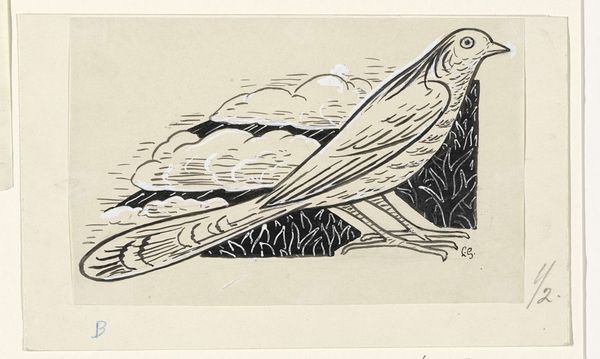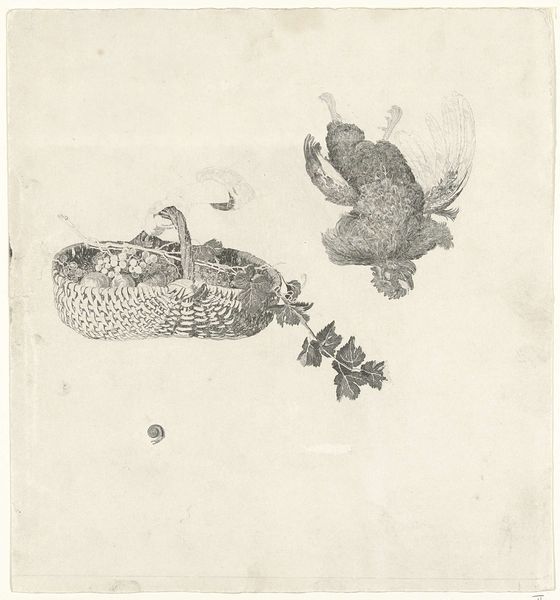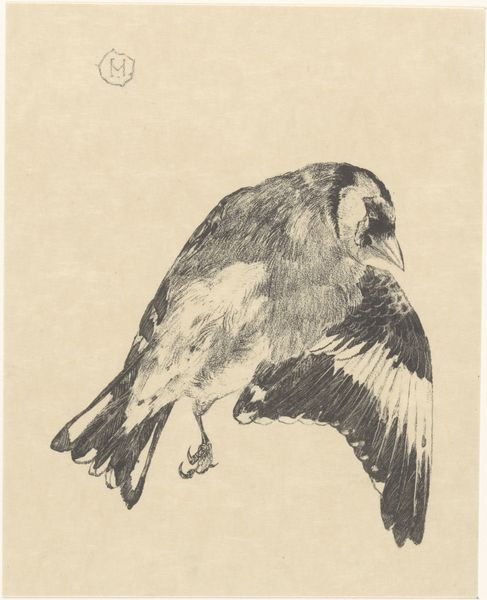
Dimensions: image: 10.48 × 13.02 cm (4 1/8 × 5 1/8 in.) sheet: 30.48 × 33.02 cm (12 × 13 in.)
Copyright: National Gallery of Art: CC0 1.0
Curator: Welcome. Today, we'll be discussing Leonard Baskin's print, "Crows," created in 1951. Baskin was a prolific sculptor, printmaker, and book illustrator whose work often grappled with themes of mortality and the human condition. Editor: Oh, my! It's stark, isn’t it? Those black birds on the bare page feel so lonely. Makes you think of those silent, Hitchcockian moments right before... something happens. Curator: That starkness, I think, speaks to the socio-political context of the era. Post-war America, the shadow of the Cold War... Baskin, deeply concerned with humanism, used such imagery as a form of social commentary. His engagement with the Black Arts Movement further solidifies this reading. Editor: I get that. Still, my first hit is a kind of raw primal shiver. It's that giant head looming with such incredible detail, rendered in almost an exaggerated style, like a crow inflated with ego. Curator: Absolutely. The technique here is engraving. It requires meticulous carving, which allows for very fine lines, thus producing rich textures. You can observe how the bird in the top left is depicted almost like a tiny detail on the enormous head, a deliberate choice by Baskin, perhaps about perspective and insignificance. Editor: And the empty space around them makes it more striking, doesn't it? They are stark and black. It makes me want to scatter seeds… or run the other way. It depends on the day, I suppose. Curator: These contrasting reactions are key to understanding Baskin. He doesn't offer comfortable resolution. It reflects the anxieties and intellectual currents shaping mid-century art. Editor: Well said! Looking closer, Baskin makes each bird so distinct, not just symbols, but like characters from a dark tale waiting for their verses. The print whispers so powerfully about darkness and what can lurk just outside our door. Curator: And from a historical point of view, we could say it urges us to acknowledge, to analyze and confront those lurking shadows rather than succumb to fear. It invites discourse about humanity itself.
Comments
No comments
Be the first to comment and join the conversation on the ultimate creative platform.
